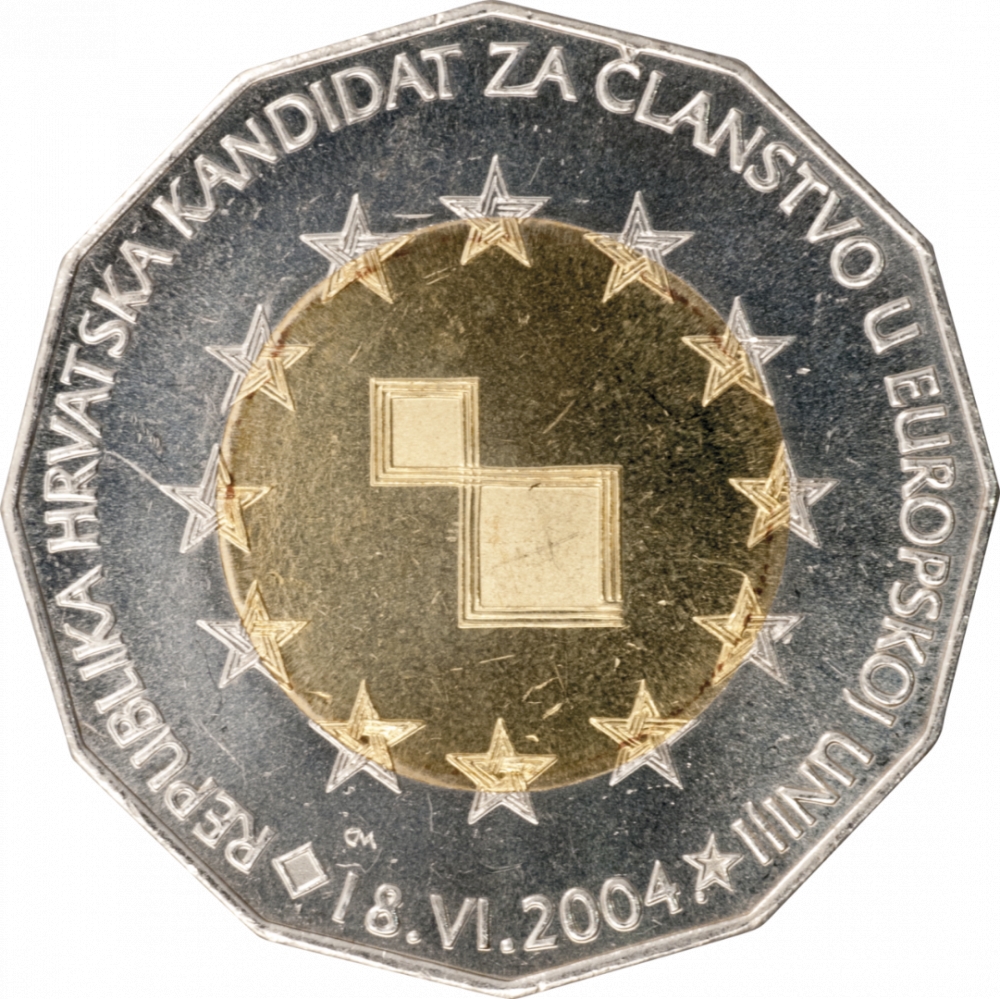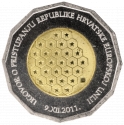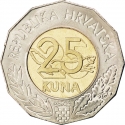You are about to finish your registration. Please check your mailbox (including spam folder). There should be a letter with a confirmation link. Check setting to make sure that your e-mail address is correct.
Send letter againDescription
The coin commemorates the Republic of Croatia becoming an EU membership candidate.
The 2013 enlargement of the European Union saw Croatia join the European Union as its 28th member state on 1 July 2013. The country applied for EU membership in 2003, and the European Commission recommended making it an official candidate in early 2004. Candidate country status was granted to Croatia by the European Council on 18 June 2004.
The accession process of Croatia was complicated by the insistence of Slovenia, an EU member state, that the two countries' border issues be dealt with prior to Croatia's accession to the EU. Croatian public opinion was generally supportive of the EU accession process, despite occasional spikes in euroscepticism.
Release date: 4 August 2005
Designer: Damir Mataušić
Obverse

|
The central part of the coin core features two squares symbolising the Republic of Croatia, placed one above the other with touching corners. The squares' edges, shown as if in motion, are formed by three lines, modelled after the Croatian wattle. The loose lines in the right upper corner of the lower bigger square are a symbol Croatia's openness towards the European Union. These lines stretch over to the coin ring embossed with twelve EU stars, which are interlaced by the Croatian wattle, as a symbol of Croatia's determination to become an integral part of the EU. Positioned centrally along the lower edge and bordered by a small square on the left and a small star on the right is the date "18 June 2004". The inscription "The Republic of Croatia Candidate for being a member of European Union" continues from the date to the right, closing the circle on the coin. Above the square, in the ring, it is written the signature of the engraver (DM). REPUBLIKA HRVATSKA KANDIDAT ZA ČLANSTVO UEUROPSKOJ UNIJI |
|---|---|
Reverse

|
The central part of the coin's core carries the designation of the nominal value 25. Within the numeral outlines, the figure of a pine marten running towards the right is shown; the marten's body is integrated with the numeral denoting the nominal value. In the bottom, central part of the coin's ring the coat of arms of the Republic of Croatia is impressed. A blooming laurel branch is placed in a semicircle on the left to the coat of arms, while a common oak branch with fruits is on the right. The top part of the ring carries the semicircular inscription The Republic of Croatia. REPUBLIKA HRVATSKA |
| Edge |
25 Kuna
Croatia in EU
EU Membership Candidate
Subscribe series
KM# 78 Schön# 85
Croatia in EU
EU Membership Candidate
Characteristics
| Type | Commemorative Issue (Circulating) |
| Material | Copper Aluminum Nickel |
| Weight | 12.75 g |
| Diameter | 32 mm |
| Thickness | 2.2 mm |
| Shape |
|
| Sides | 12 |
| Alignment | Medal |
| Mint |
Croatian Monetary Institute (HNZ)
|





